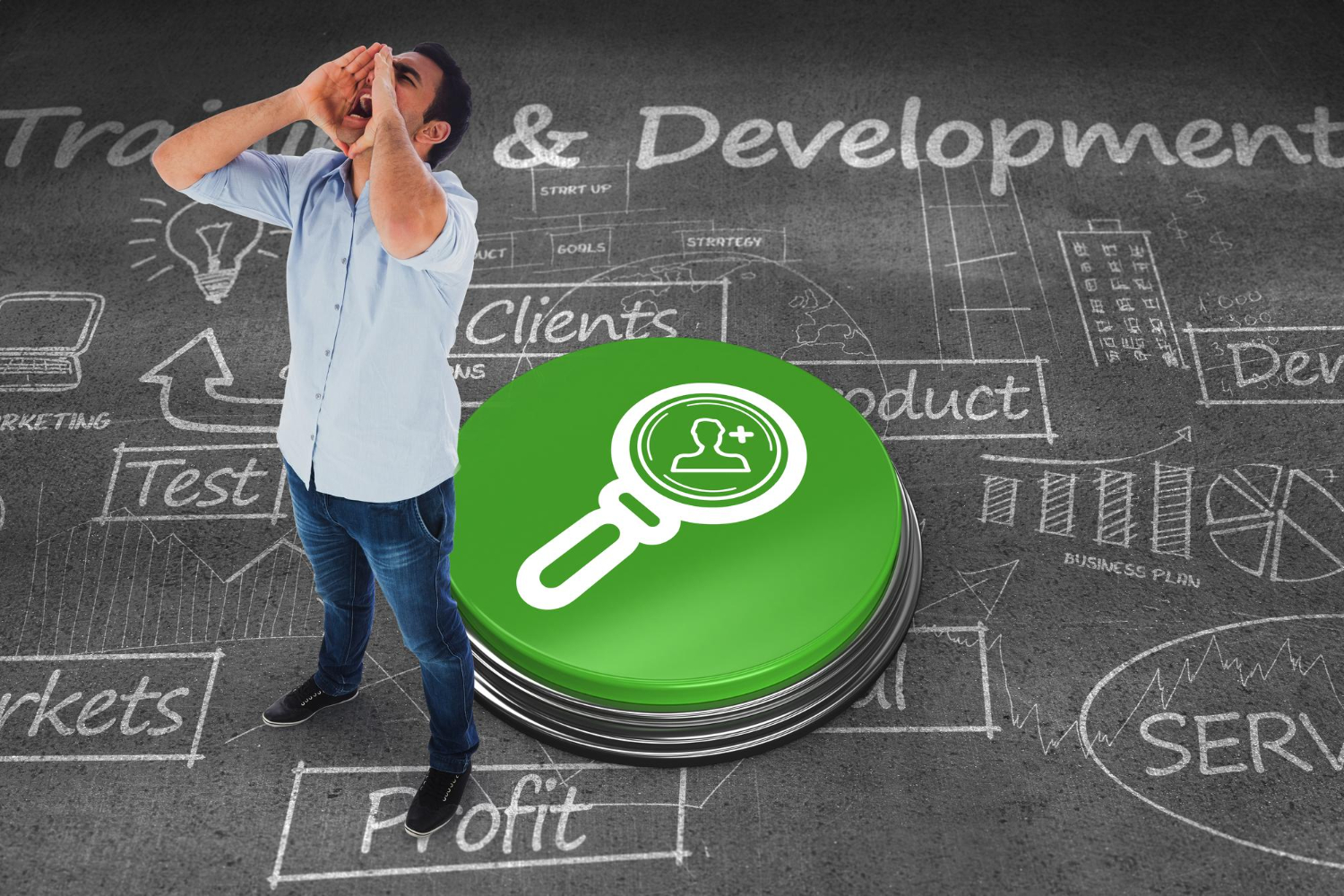It’s the classic story of triumph over adversity, the tale you see in movies or hear in inspiring TED Talks. But this time, it’s not about some Silicon Valley darling or a billion-dollar unicorn. It’s about a business that was on the verge of collapse—only to find its way back to the top through, of all things, strategic technology choices.
As someone who has spent almost two decades in web development and design, I’ve seen this happen more times than you’d expect. When you’re in this industry long enough, you notice the patterns: companies start strong, reach a certain level of growth, and then something goes wrong. Sometimes, it’s market conditions and occasionally internal decisions, but more often than not, it results from outdated or ill-suited technology. That’s where the hero of our story found itself. But let’s not get ahead of ourselves.
The Great Fall: When Business Meets Bad Tech

I was working on a project for a business that had experienced what could only be described as a tech meltdown. Their story was like many others—rapid growth, high demand, and infrastructure that couldn’t keep up. The company had expanded its operations, launching an e-commerce platform that promised to revolutionize its customer experience. Unfortunately, they built it using a slew of off-the-shelf plugins, free add-ons, and a makeshift backend cobbled together in a way that would make any seasoned developer cringe.
Now, don’t get me wrong—there’s nothing inherently wrong with using pre-built solutions. Platforms like Shopify and WordPress offer incredible flexibility. But when scaling fast, free plugins can turn into ticking time bombs. Their site, for example, used over 100 plugins, many of which were outdated, redundant, or incompatible with one another. This led to slow load times, frequent crashes, and a nightmarish user experience that drove customers away faster than you can say “404 error.”
Why Cheap Tech Shortcuts Rarely Work
Let me drop some statistics here, just so we’re all on the same page. According to a Google study, 53% of mobile users abandon a site that takes longer than three seconds to load. Three seconds! If your platform is lagging because you’ve overloaded it with low-grade plugins or poorly coded themes, you’re essentially sending your customers to your competitors on a silver platter.
In our client’s case, this is exactly what happened. Their bounce rate shot up by 40%, conversion rates plummeted, and SEO rankings tanked. Why? Google prioritizes user experience—and that includes site speed. When the site started slowing down, Google took notice—and so did their customers.
Here’s a bit of a global insight: even giant companies like Walmart know the importance of site speed. Walmart found that for every one-second improvement in page load time, their conversions increased by 2%. Imagine that in the context of an e-commerce giant! Now, scale that down to a medium-sized business, and the stakes are just as high. Bad tech choices can lead to a downward spiral, just as it did for the business in our story.
Rebuilding from Scratch: The Tech Overhaul
I remember the day I sat down with this company’s leadership team. They were in panic mode, thinking they’d have to abandon their entire online business. But here’s where things started to turn around: They realized the problem wasn’t their business model—it was the technology supporting it. They didn’t need to throw the baby out with the bathwater; they just needed a tech overhaul.
And that’s where our team at Above Bits came in. We started by stripping away all the unnecessary components. The 100+ plugins were reduced to a core set of 15 well-maintained, premium plugins that were actually relevant to their needs. We also worked on their backend, moving them to a more robust hosting solution and implementing content delivery networks (CDNs) like Cloudflare to distribute their site’s load across multiple servers globally.
Now, let me get technical for a second. CDNs are critical for businesses looking to optimize site performance. Companies like Amazon and Netflix rely heavily on CDNs to ensure fast load times, regardless of their users’ location. For our client, using Cloudflare slashed their load times from an average of 12 seconds to under 2 seconds. That’s a massive difference!
Why Custom Solutions Often Beat Out-of-the-Box Ones
A popular saying in the tech world: “If you’re not paying for the product, you are the product.” This rings true in free software, plugins, and templates. The main issue with free or low-cost solutions is that they are built for a wide audience. They’re generic by nature, and while that’s fine for small businesses or hobbyists, it becomes problematic for companies looking to grow.
Our client’s free e-commerce theme couldn’t handle the level of customization they needed. We developed a custom solution that integrated seamlessly with their payment gateway, CRM, and inventory management system. It was tailor-made for their business, which meant fewer bugs, faster load times, and a better user experience overall.
This is why companies like Apple, Nike, and Tesla rely on custom-built solutions. They understand that generic tools are great for testing the waters, but custom development is the only way to go if you’re looking for a high-performance platform that can grow with you.
The Downsides of Over-Complicating Technology
Of course, we can’t paint an entirely rosy picture here. There are downsides to building custom solutions. The most obvious one is cost. Custom development isn’t cheap, and for small—to medium-sized businesses, it can seem like a big upfront investment. However, as our client learned, the long-term benefits often outweigh the initial costs.
Another downside is that custom solutions require ongoing maintenance. You can’t just “set it and forget it.” There’s a reason why big companies hire entire IT departments to maintain their tech infrastructure. But again, for businesses that are serious about scaling, this is a necessary part of growth.
What’s important is finding the right balance. Not every business needs a fully custom platform right out of the gate, but if you aim for long-term success, you can’t rely on shortcuts forever.
Global Tech Trends: Learning from the Big Players
Let’s take a step back and look at some global trends. Businesses like Shopify experience meteoric growth by providing customizable, user-friendly e-commerce platforms. But even Shopify users know the platform’s limits. Big brands that started on Shopify often outgrow its capabilities. Companies like Kylie Cosmetics, for instance, initially thrived on Shopify but eventually had to move to more robust platforms as they scaled.
The same goes for other e-commerce giants like Amazon. Do you think Amazon is running on a one-size-fits-all platform? Absolutely not. They’ve built their infrastructure from the ground up, with a massive team of developers constantly tweaking and optimizing. And while not every business needs Amazon-level infrastructure, it’s important to recognize when your current setup is holding you back.
Statistics That Speak Volumes
To further drive home this point, let’s look at some numbers:
- 40% of consumers will leave a page that takes longer than 3 seconds to load (Source: Google).
- Every 1-second delay in page load can lead to a 7% reduction in conversions (Source: Akamai).
- A well-optimized site can lead to 88% increased engagement and double the time users spend on the site (Source: HubSpot).
After the overhaul, our client saw a 65% decrease in bounce rates and a 35% increase in conversions, and their SEO rankings began to climb back up within weeks.
Now that we’ve covered this business’s fall and rise through smart tech choices let’s explore some of the technical decisions that helped shape this comeback and why choosing the right technologies can make all the difference.
Why Hosting Matters More Than You Think
If you’ve been following along, you already know that one of the first steps we took in rescuing this business from the tech abyss was migrating them to a better hosting solution. It’s one of the most overlooked aspects of a business’s digital presence, yet it can impact performance, security, and cost-effectiveness.
In this case, they were on a cheap shared hosting plan. Now, shared hosting is fine for running a small blog or a personal site. Still, once you deal with traffic spikes, transactions, and sensitive customer data, shared hosting becomes a liability. You are competing for resources with potentially hundreds of other sites on the same server, and security risks increase exponentially.
The results were almost immediate when we moved them to a dedicated virtual private server (VPS). With VPS, you’re allocated a portion of the server’s resources exclusively for your business. This means no more slowdowns due to other sites hogging bandwidth. The improved site performance also helped with SEO rankings, as Google factors load times into its algorithm.
If you’re wondering why this isn’t common knowledge, it’s simple: hosting providers make more money off shared hosting. It’s a numbers game for them, and unless you’re specifically asking for VPS or dedicated hosting, most companies will steer you toward cheaper, less efficient options.
The Balance Between Cost and Performance: Where Big Companies Excel
To give you some perspective, let’s talk about Amazon. Yes, that Amazon. They’ve mastered the art of balancing cost and performance with their Amazon Web Services (AWS) offering, which ironically, powers countless smaller businesses. AWS allows businesses to scale as they grow, but the problem is it’s often more expensive than most SMBs need.
For instance, small businesses sign up for AWS expecting it to be the perfect solution, only to be hit with unexpected bills. AWS can charge for every little service, from data transfers to API requests. We often recommend more straightforward VPS solutions unless you’re building an enterprise-level system like Netflix or Airbnb.
Fun fact: Netflix’s entire content delivery is built on AWS, and while it’s great for them, it’s overkill for a company processing, say, 1,000 orders per month. If you don’t need that infrastructure level, plenty of more affordable and equally reliable options exist.
Why Choosing the Right Platform Is Crucial
In the world of web development, the platform you build on is just as important as the foundation of your house. If you’re in the wrong environment, you’re constantly patching things up instead of focusing on growth. Our client initially built their site using WordPress—again, not a bad choice in itself—but they had stretched it beyond its natural capabilities.
WordPress powers over 40% of the web, and for good reason. It’s flexible, open-source, and has a massive community of developers constantly contributing to its ecosystem. However, as flexible as WordPress is, it’s not always the right tool for scaling an e-commerce business. Our client found this the hard way when their site started experiencing massive slowdowns, plugin conflicts, and data inconsistencies.
That’s when we shifted to Magento, now known as Adobe Commerce. Magento is built for e-commerce, and while it’s more complex to set up, it’s designed to handle the scalability our client needs. The result? Fewer crashes, faster load times, and a platform that could grow with the business instead of holding it back.
However, let’s be transparent here—Magento isn’t for everyone. One of the biggest complaints we hear about Magento is its steep learning curve. It’s not as user-friendly as Shopify or BigCommerce and requires more backend customization. But the long-term payoff is worth it if you’re willing to invest the time or hire the right development team (hello, Above Bits).
The Reality of Customization: Pros and Cons
When people hear “customization,” their eyes usually light up. Who doesn’t want a fully tailored solution that works exactly how they need it to? But here’s the reality: customization comes with trade-offs.
Plus, you get a system built specifically for your business needs. It’s optimized, it’s efficient, and unnecessary features do not bog it down. For example, in the case of our client, we developed a custom integration for their inventory system that allowed them to automate stock levels and shipping, something their previous platform could never handle.
But here’s the downside—customization often means a higher upfront cost and requires ongoing maintenance. You can’t expect a custom solution to run forever without tweaks, updates, and occasional bug fixes. This is something big companies like Uber and Airbnb understand. They’ve built fully customized platforms but have entire teams dedicated to maintaining those systems.
For smaller businesses, it’s about finding that sweet spot. You don’t always need to reinvent the wheel, but when generic solutions are stifling your growth, customization becomes a smart investment.
Customization Gone Wrong: The Case of Target
To give you a cautionary tale, let’s talk about Target. Back in 2011, Target decided to leave Amazon’s e-commerce platform and build its own custom solution. They wanted something tailored to their needs that could give them more control over their customer experience. Sounds great in theory, right?
Except it didn’t go as planned. The new platform was riddled with bugs, crashes, and missing features. Target’s website famously crashed during the launch of Missoni’s fashion line, costing them millions in lost sales. The lesson? Customization is powerful, but only if done right.
Why Security Can’t Be an Afterthought

Security is one area where businesses often cut corners, only to regret it later. With cyber threats on the rise—43% of cyber-attacks now target small businesses—it’s crucial to invest in securing digital assets from the get-go. In our client’s case, their initial setup was woefully under-protected. They didn’t even have basic SSL encryption for secure transactions.
After migrating them to a more secure hosting environment and implementing proper SSL certificates, firewalls, and two-factor authentication, they protected their customer data and gained an SEO boost. Google rewards secure websites and businesses that fail to implement SSL often penalize themselves in search rankings.
Of course, security isn’t just about SSL. It’s about ensuring your backend is locked down, your databases are encrypted, and your employees are educated on phishing and social engineering attacks. Companies like Equifax, which experienced a massive data breach in 2017, are prime examples of what happens when security is neglected.
What We Can Learn from Netflix’s Data Strategy
Netflix is an excellent case study in using data smartly to fuel business growth. It’s famous for its recommendation algorithm, which is powered by data collected from users’ viewing habits. In fact, its algorithm recommends that 80% of the shows people watch on Netflix.
But it’s not just Netflix that benefits from data. In our client’s case, we set up advanced analytics to track user behavior, site performance, and conversion rates. By analyzing the data, we were able to fine-tune their platform for better user engagement and higher sales. Every business, regardless of size, should be using data to drive decisions rather than relying on guesswork.
The Comeback: From Collapse to Success
So, what happened to our client? They saw an immediate turnaround after all the tech overhauls, customizations, and optimizations. Sales increased by 40%, customer retention rates improved, and their SEO rankings returned. The business that was once on the brink of collapse was now thriving, all thanks to making smart technology choices.
The moral of the story? Don’t let bad tech decisions drive your business into the ground. Optimizing your hosting, choosing the right platform, or investing in custom solutions can make all the difference.
Let Us Help You Make the Right Tech Choices
At Above Bits, we’ve been helping businesses like this one make smarter tech decisions for nearly two decades. We’ve seen it all—from companies struggling with bad plugins to those on the verge of collapse due to poor infrastructure. If you’re worried that your technology choices are holding you back, let us look. We’ll give you an honest assessment and help you find the right solutions—optimizing your current setup or building something entirely new. Reach out to us today, and let’s turn your tech into a competitive advantage.
Keep an eye for more news & updates on Gossips!




